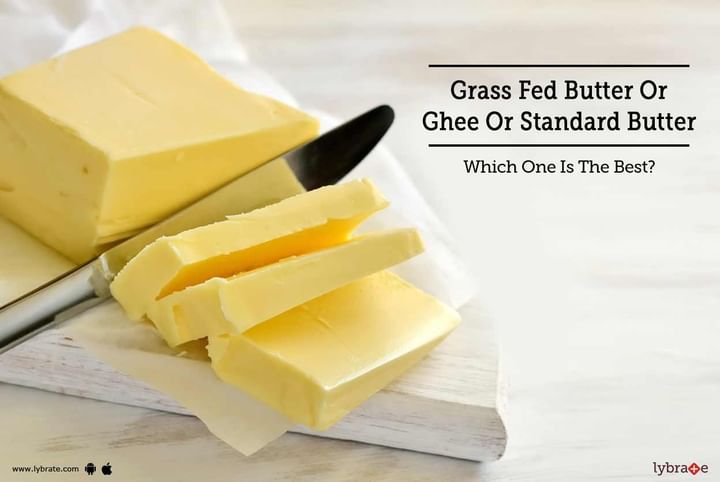Grass-Fed Butter Or Ghee Or Standard Butter - Which One Is The Best?
Weight loss journeys are trending these days like never before. People are becoming more health conscious day by day. And the first thing that gets ousted from the routine meals is ghee!! Ghee, or even butter, is often deemed as a hurdle in the weight loss programs. It can be an obstacle for sure when there isn’t a portion control. However, if consumed within an ideal range, it is very healthy for the human body.
Ghee is a type of clarified butter, having origins in the Indian subcontinent. It is known by different names around the world such as clarified butter, butter oil, drawn butter or simply anhydrous milk fat (AMF). It has been widely used in Ayurvedic health science since ages. Modern science also verifies that it has a host of health and cooking benefits, including a solid nutrient profile and a high smoke point. Ghee does not contain any lactose or casein. But it’s rich in short-chain and medium-chain fatty acids (25 percent or more) and butyrate.
Butter is made by churning fresh or fermented milk or cream. This is done to separate butterfat from buttermilk. It contains butterfat, milk, water, and proteins. But it has a comparatively lower smoke point and a limited shelf life. Butter contains 12 percent to 15 percent medium and short chain fatty acids. These fatty acids are not associated with any cardiovascular disease.
Some major differences between ghee and butter are as follows:
- Ghee is an excellent cooking medium whereas butter gets burnt at high temperatures.
- Butter produces a rancid smell when heated while ghee has a high smoke point and adds aroma to recipes.
- Butter has a very limited shelf life while ghee can stand without refrigeration for a longer period of time.
- Butter contains milk proteins which are difficult to digest for people allergic to milk.
Grass-fed butter is made from the milk obtained from the grass-fed cows. It has largely been brought into use nowadays owing to its numerous health benefits. Butter from the grass-fed cows is a major source of heart-healthy nutrients. It has 10-13 times more vitamin A, 5 times more conjugated linoleic acid (CLA) and 3 times more vitamin D than the conventional butter. Health benefits of grass-fed butter are:
- It contains conjugated linoleic acid (CLA) which helps to reduce the belly fat and supports muscle growth. CLA suppresses the inflammatory prostaglandins like PGE2 which in turn reduces inflammation. CLA also has a powerful effect on the stabilization of blood sugar.
- It is a good source of butyrate, which is a short chain fatty acid and helps in reducing inflammation.
- It contains Vitamin A (Retinol) and Vitamin K2 (Menaquinone) which has been proven to reverse arterial calcification and helps to increase bone density.
- It is a rich source of omega 3 fatty acids.
Here is an overview of the important features of the each:
- Contains CLA
- No lactose or casein
- Lower nutrient value
- Immunity booster
- Safe for lactose intolerant people
- Low smoke point
- High nutrient value
- High smoke point (250 degree C)
- Low shelf life
In case you have a concern or query you can always consult an expert & get answers to your questions!



+1.svg)
